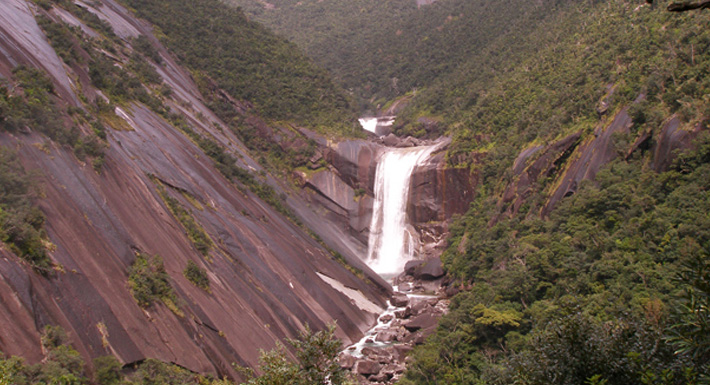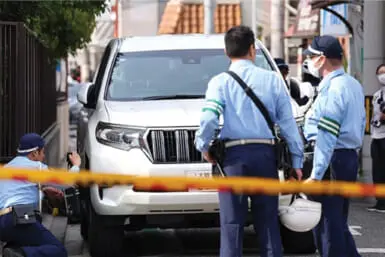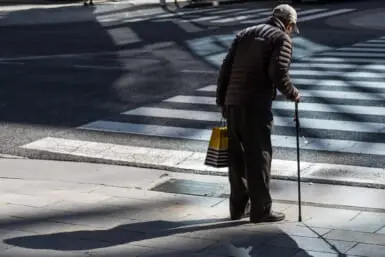by Kelly Wetherille
Every year thousands of city dwelling Japanese tourists flock to Yakushima in hopes of getting back to nature. And for those seeking nature, there is hardly a better place, either in Japan or abroad. The island, designated a UNESCO World Heritage Site in 1993, is home to one of the world’s most pristine ancient forests.
In the roughly 12-square-kilometer ‘wilderness core area,’ no signs of past tree cutting have been traced by scientists, and the surrounding forest is no less dense and magical. As if this alone weren’t enough, Yakushima also boasts beautiful beaches, more breathtaking waterfalls than should be allowed in such a small area, and roughly the same number of monkeys and deer as there are people living on the island.
With all this to show for it, it’s no wonder that tourism makes up over half of Yakushima’s local economy.
Despite its location south of Kyushu, Yakushima’s small size and relative accessibility make it a great destination for a weekend getaway from Tokyo. Japan Airlines operates several flights a day from Tokyo to Kagoshima (just under two hours) as well as connections to Yakushima (roughly 30 minutes), and most flights are scheduled so that there is very little waiting in between. Flying domestically in Japan is a pleasant and largely stress-free experience; there are no limitations on liquids that can be brought on board, the flight attendants are friendly, and security checks are quick and painless. Once on the ground in Yakushima, most passengers simply stroll directly to their awaiting hotel shuttle or rental car, as there is hardly a reason to check baggage for just a weekend trip.
There are several small inns, as well as a few larger hotels on Yakushima, but the newly opened Sankara Hotel & Spa is easily the island’s most complete and luxurious accommodation option. Located about a 15-minute drive from Yakushima airport, the resort-style hotel boasts five suites of varying size and 12 two-story villas with one room on each floor. There are two full restaurants plus poolside dining, and a full-service spa offers a variety of Asian-influenced treatments. The hotel’s design and decor is modeled after a Southeast Asian resort, and all of the furniture was specially made for Sankara in Bali. Attention was paid down to the smallest details, from the biodegradable toothbrushes made from boar bristles and a cornstarch-based polymer to the organic herbal teas that are harvested onsite and placed in each room. General manager Jiro Sato says he chose Yakushima as the site of his newly founded company’s first hotel because it is “one of few islands in the world that has the unique combination of mountains, beaches, and naturally occurring spring water.” He was also drawn to the spiritual quality of the island, which is linked to its rare natural ecosystem.
While there are a few buses on Yakushima and group tours can be arranged through most hotels, the best way to explore the island is by car. Most of the major rental agencies, including Orix and Toyota, have a presence on the island, and many have branches near the airport and even offer a pickup and drop-off service. Be sure to bring your international driver’s license if you don’t have a Japanese one.
Perhaps Yakushima’s best-known tourist attraction is the Jomon Sugi, the oldest and largest of the island’s many cryptomeria trees. The majestic tree is over 25 meters tall and has a circumference of over 16 meters. Its age is estimated between 2,170 and 7,200 years. But getting to this tree will take a four- to five-hour hike in each direction from the nearest road, so only the most diehard nature-lovers make the trip. Not to worry— there are plenty of other worthy specimens of cryptomeria (also called Japanese cedar, despite being a member of the cypress family) on the island. About a half-hour drive from the town of Miyanoura is the parking area for Shiratani Unsuikyo, a nature reserve with several kilometers of well-maintained hiking trails surrounding the Shiratani Creek. In addition to several large cryptomeria trees, the area also boasts countless waterfalls, ranging from those that cascade several meters down a rock face to unexpected trickles amongst mossy trees. Hiking routes take between one and five hours to complete, but be sure to ask at the entrance (where you pay the ¥300 per person entry fee) about any special circumstances, as trails are sometimes closed due to high water after a heavy rainfall.
The perfect way to relax after a long hike through the primeval forest surrounding Shiratani Unsuikyo is with a soothing spa treatment back at Sankara. The spa menu is based on Thai healing techniques, and treatments range from traditional Thai massage to oil and aromatherapy massages, which can also be combined with an herbal massage ball treatment. After a skilled practitioner administers a full-body massage, the herbal ball is steam-heated and then pressed against the skin, warming the body from the outside in. This indulgent experience makes the perfect end to a long day of hiking in the rain. Afterward, refuel with a delicious dinner at Sankara’s French-inspired restaurant Okas. Here, executive chef Chiharu Takei uses fresh, local, and largely organic ingredients to create European dishes with an island twist.
Yakushima has the highest rainfall of anywhere in Japan, and residents are known to cheekily remark that it rains “35 days a month” here. The weather is unpredictable, especially up in the mountains, so be sure to go prepared with proper footwear and a rain jacket or poncho. But the rain isn’t all bad—it allows for a seemingly endless supply of natural spring water, and fills the rivers and creeks that flow into the many magnificent waterfalls.
Of all the waterfalls on the island, there are a few must-sees. Just a short drive from Sankara Hotel is Senpiro waterfall, which can be viewed from an observation area just a few minutes’ walk from the parking lot. Bordered on both sides by massive rock faces on which trees somehow manage to grow, Senpiro is actually a pair of waterfalls, with the smaller of the two lying slightly upstream from the larger one. On the west side of the island is Ohko waterfall, named one of Japan’s top 100 waterfalls. Here the water cascades in several streams from a height of 88 meters into a crystal clear pool below.
Continuing along after Ohko waterfall, drivers will arrive at an area where the road narrows to one lane that twists and winds between cliffs and forests. This section is known as Seibu Rindoh Forest Path, with ‘path’ being the operative word. While the road is paved and well-maintained, it must be navigated with special care, and large vehicles are not allowed. Along this stretch visitors have the best chance of seeing Yakushima’s native deer and macaque monkeys. While there are no guarantees, sheer probability dictates that most people will run into at least one of the two, if not both species.
Perhaps the greatest thing about Yakushima’s natural beauty is that it can be enjoyed by anyone, regardless of age or physical ability. A ten-hour hike can take you to the Jomon Sugi and back, while there are also plenty of sights that can be enjoyed from the road without even leaving the car, or by taking a short walk from the parking area. To quote Jiro Sato, the entire island is like “a piece of heaven that has fallen to earth.”
External Link:
Yakushima Travel Guide










